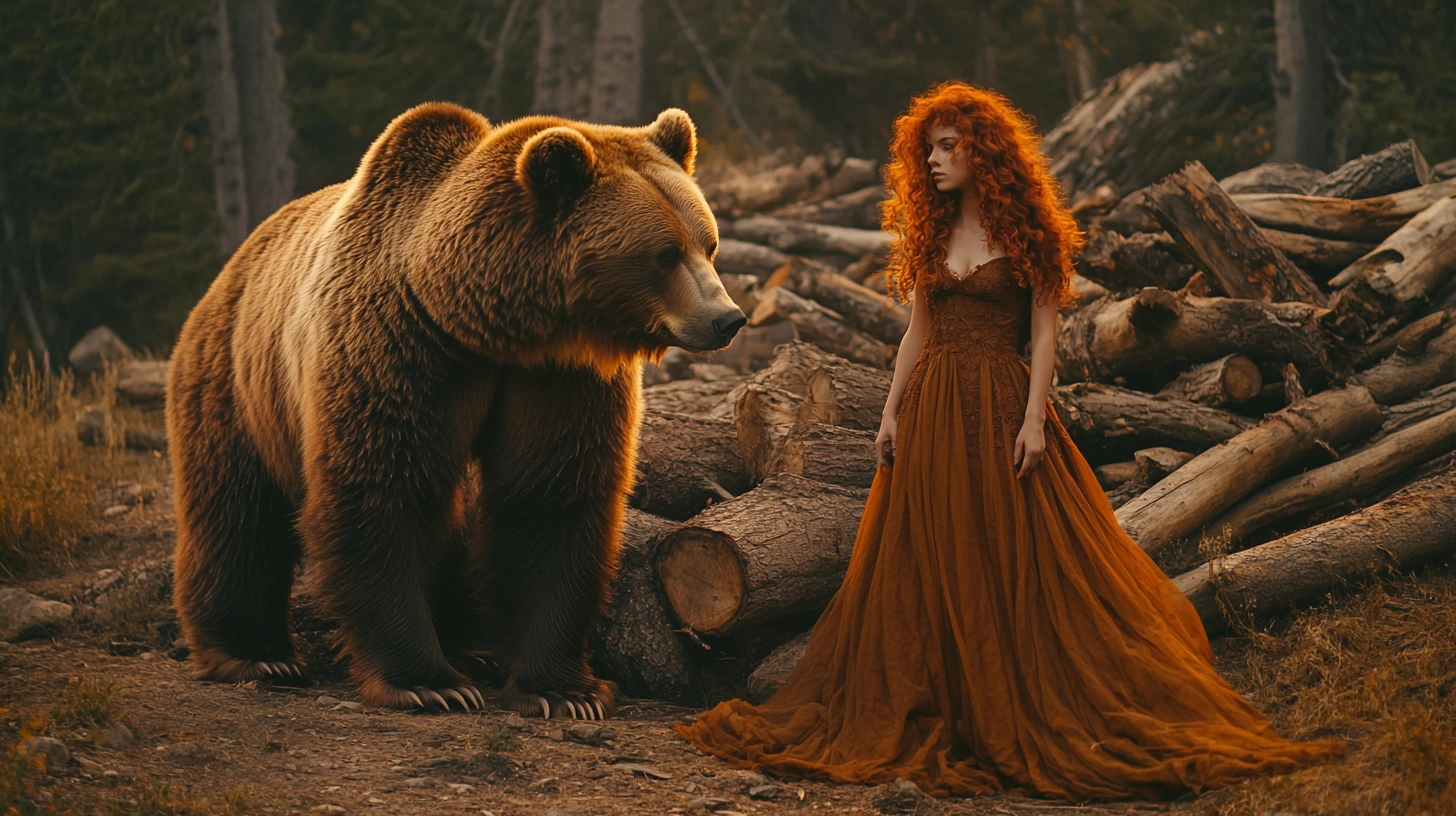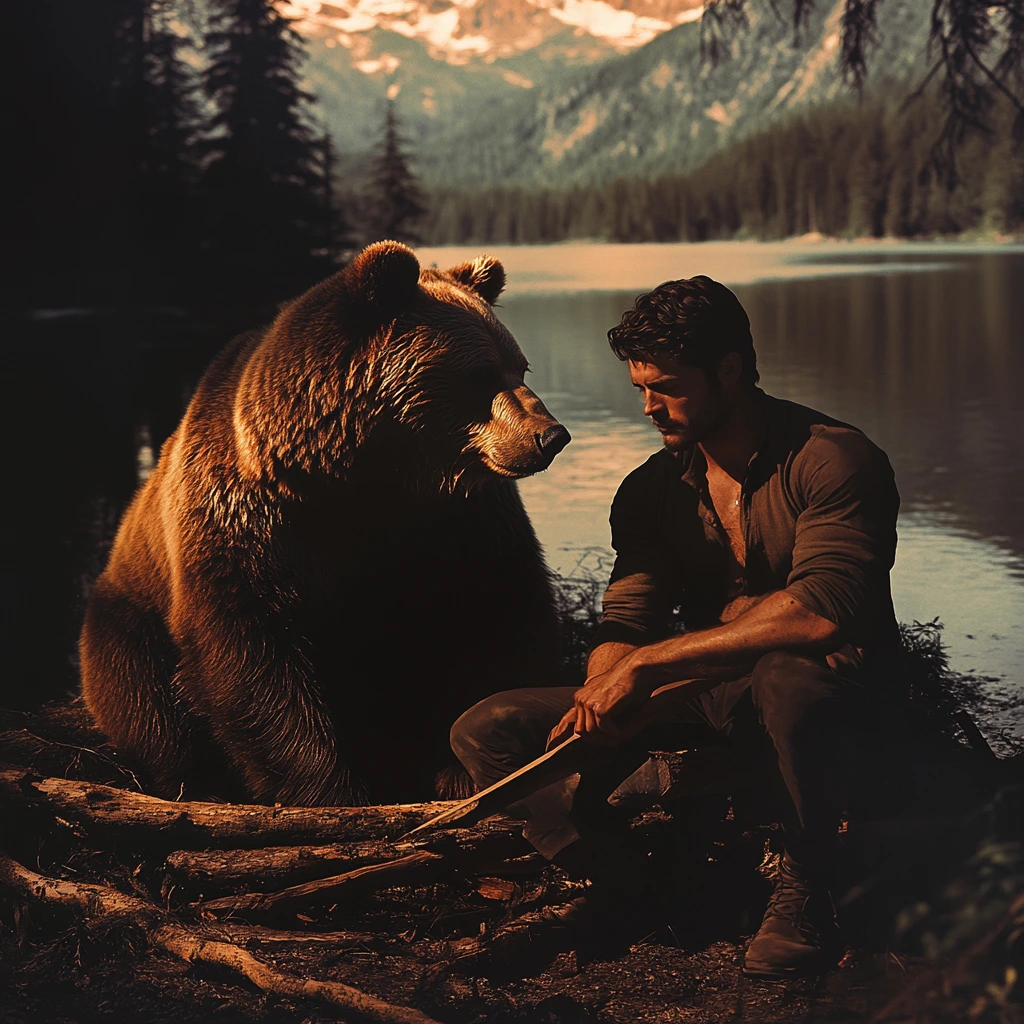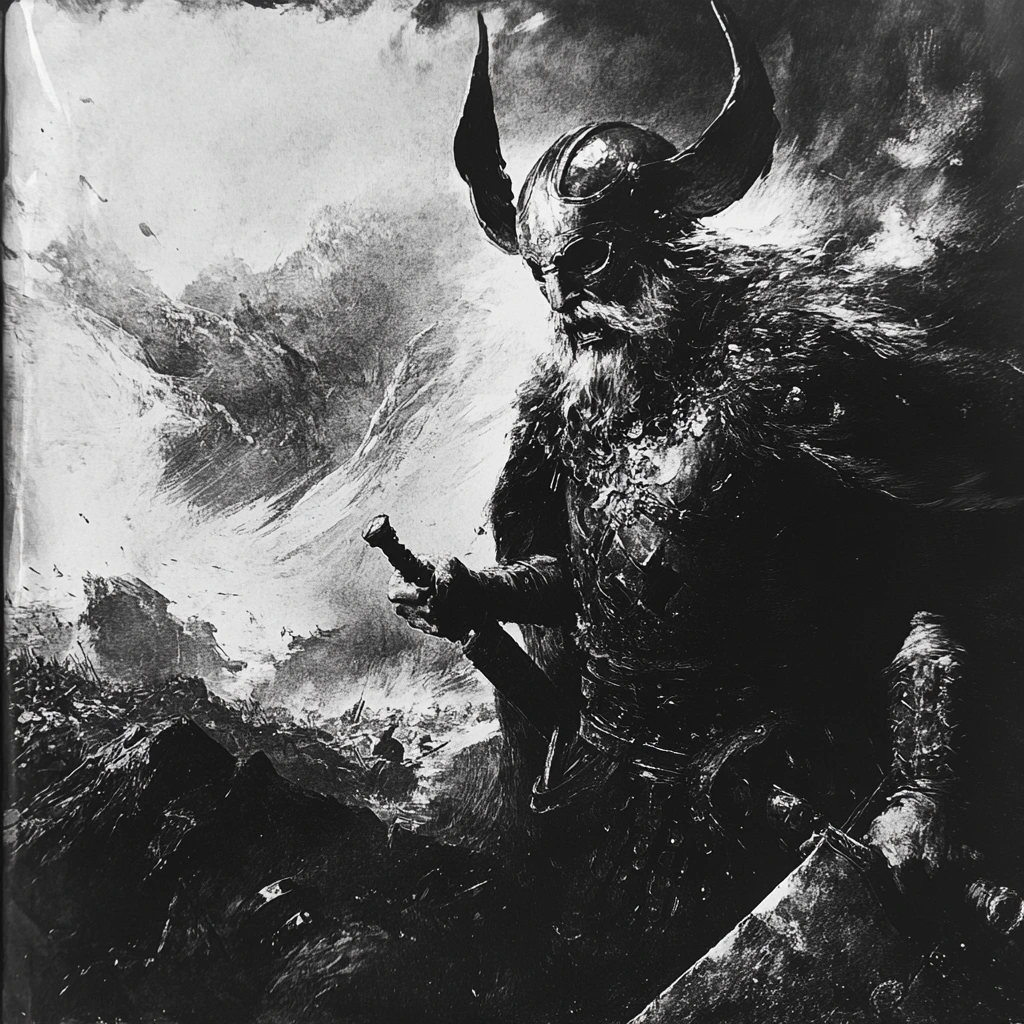Table of Contents
ToggleA werebear in fantasy romance literature is a character who can shift between human and bear form. Like other shapeshifters, werebears are often strong, protective, and deeply connected to nature.
In fantasy romance stories, they usually have a tough, rugged exterior but also show a gentle and caring side, especially toward their love interest. Werebears are known for being loyal and protective, often driven by their instincts to safeguard their mate or family. Their mix of strength and tenderness makes them a popular character in shifter romance books.
Werebear Traits
- Tall and Muscular: As humans, werebears are often described as tall, with broad shoulders and a powerful, muscular build, reflecting their strength and bear-like nature.
- Rugged Features: They typically have a rugged appearance, often with scruffy beards, long hair, or a wild look that emphasizes their connection to the wilderness.
- Solid and Bulky: Werebears are usually portrayed as physically solid and bulky, representing their immense strength and resilience.
- Commanding Presence: Their size and stature give them a strong, commanding presence that draws attention and makes them stand out in a crowd.
- Massive Bear Form: In bear form, they are portrayed as larger than regular bears, with thick fur, sharp claws, and an intimidating size.
- Powerful Yet Gentle: Despite their size and power, werebears often have a gentle and nurturing side, especially when it comes to their mate, balancing their fierce nature with tenderness.
Psychological Portrait of a Werebear
- Protective: Werebears always put their loved ones first, especially their mate. They’ll do whatever it takes to keep them safe.
- Loyal: Once they commit, they stay fiercely devoted. Werebears never back down when it comes to supporting those they care about.
- Strong and Stoic: They don’t always show their emotions easily, but underneath that tough exterior, they care deeply for the people in their life.
- Gentle and Nurturing: Despite being strong, they know how to be gentle and provide comfort, especially when someone they love needs it.
- Prefer Solitude: Werebears often like their own space and live alone or in quiet places. But falling in love tends to pull them out of that solitude.
- Patient: They take their time, whether it’s winning someone’s heart or solving a problem. Werebears never rush things.
- Primal Instincts: Their bear side makes them passionate and instinct-driven, especially when it comes to protecting and caring for their mate.
Galatea Werebears
My Sexy Stepbrother is a Werebear by Kelly Lord
This book is about Helen, who isn’t happy about attending her mom’s wedding to a mountain man. Things change when she meets Sam, her new stepbrother, who she finds really attractive. Even though they are very different and now related, they feel a strong connection. As they grow closer, Helen discovers that Sam is hiding a big secret — one that’s hard for him to keep hidden.
We Are Bear by E. Adamson
This book is about Taylee, who was raised by wolves and is getting ready to become one herself as she turns eighteen. But after a strange event in the woods leaves her injured, a young man named Tavis helps her recover. He reveals that both he and Taylee are actually bears, not wolves. Now, Taylee has to figure out this new world where different people want to control her, all while falling in love with her true mate.
The Transformation Process
1. What Triggers the Shift:
- Strong emotions like anger, fear, or the need to protect someone usually trigger the transformation. Some werebears can shift whenever they want, while others lose control during intense moments.
- It can also happen during a full moon or in dangerous situations, though this is less common than with werewolves.
2. Physical Changes:
- The shift is intense, with the werebear’s body growing larger and more muscular. Bones shift, and they start looking more like a bear, with fur, claws, and sharp teeth.
- Their senses get sharper too—especially their smell and hearing.
3. Emotional Side:
- During the transformation, werebears feel a surge of instincts. They connect deeply with their animal side, often becoming more protective or aggressive depending on the situation.
- In fantasy romance, this shift usually mirrors their emotional struggle between their wild bear nature and their human feelings.
4. Shifting Back:
- They usually return to human form once the danger or emotional trigger has passed. Sometimes they shift back when they choose to. The process often leaves them exhausted but more emotionally clear.
5. After the Transformation:
- After shifting back, they may feel emotionally raw, especially around their mate. This moment often strengthens their bond, as their partner helps them find balance between their bear instincts and human emotions.
Werebear Mythology
The werebear myth comes from ancient stories, especially in Northern Europe, Russia, and North America. These cultures admired bears for their strength, and they created legends about people who could turn into bears.
Norse Mythology
In Norse mythology, warriors called berserkers believed they could channel the power of bears in battle. They wore bear skins and were said to transform into bears, gaining incredible strength and fearlessness.
- Saga of the Ynglings
One well-known Norse myth about berserkers comes from the Saga of the Ynglings, which tells the tale of fierce warriors who could enter a state of wild rage in battle. These berserkers were said to be so powerful that no weapon could harm them, and they fought with the strength and ferocity of wild animals, particularly bears and wolves.
In this myth, berserkers would wear bear skins into battle, believing that they could tap into the strength and spirit of the bear. When they entered this frenzied state—called “berserker rage“—they would fight without fear, often without armor, and their enemies would tremble at their sight. Legend has it that in this rage, they became almost invincible, stronger than any normal man.
One of the most famous berserkers from Norse mythology is Bödvar Bjarki, a warrior who fought for King Hrolf Kraki. Bödvar could transform into a bear during battle, becoming an unstoppable force. His story, told in the Hrólfs saga kraka, describes how, during a great battle, a bear appeared alongside the warriors and fought with incredible strength, tearing through the enemy. It was later revealed that this bear was actually Bödvar in his berserker form, using the power of the bear to protect his king.
Slavic Folklore
In Slavic stories, bears symbolized strength and nature. People believed some could change into bears, often tied to themes of wilderness and isolation.
- The Veles Legend
In Slavic mythology, the god Veles is closely tied to bears, nature, and magic. Veles could shapeshift into a bear, symbolizing his strength and wild nature. He often clashed with Perun, the god of thunder, in an epic battle for control over the earth and animals. Veles roamed the forests in bear form, protecting his followers and using his connection to nature.
Another common Slavic story talks about people cursed or chosen to become werebears. These individuals, able to shift into bear form, lived in the wilderness and were both feared and respected. They struggled with balancing their human emotions and animal instincts. These myths highlight the strong bond between humans and nature, with bears representing power, transformation, and protection.
Native American Legends
In Native American myths, the bear represents power and protection. Some tribes had stories about people who could turn into bears, often seen as healers or guardians.
- The Tlingit Legend
In a Tlingit legend, the Kooshdakhaa are shape-shifters who can turn into animals, including bears. In one story, a hunter meets a bear that transforms into a human and invites him to live with the bear people in the forest.
The hunter learns to shift into a bear and gains new strength. However, when he returns to his village, he feels torn between his human life and his bear identity. The story highlights the deep connection between humans and bears. It also explores the struggle of balancing life in the human world with the power of nature.
Werebears VS Werewolves
| Aspect |
Werebears |
Werewolves |
| Pack vs. Solitude | Werebears like to live alone or in quiet places, enjoying their independence. | Werewolves live in packs, surrounded by others. |
| Temperament | Werebears tend to be calm, patient, and more controlled. | Werewolves are usually more impulsive and quick to anger, especially when their instincts kick in. |
| Physical Strength | Werebears are bigger and bulkier, built for raw power. | Werewolves, on the other hand, are faster and more agile, relying on speed. |
| Romance Style | Werebears take their time in love, building trust slowly. | Werewolves often dive into intense relationships quickly, thanks to their pack mentality and instinct to claim their mate fast. |
Similarities
- Shapeshifting: Both werebears and werewolves can switch between human and animal form, showing their dual nature.
- Protective Instincts: Whether it’s a werebear or a werewolf, they fiercely protect their mate and loved ones. Keeping them safe is a huge part of who they are.
- Loyalty: Once they bond with someone, both stay incredibly loyal. They’ll stand by their mate or pack through anything.
- Primal Nature: They both have strong animal instincts, which makes them passionate and a bit territorial when it comes to their relationships.
Werebear characters bring a unique mix of strength and wildness to fantasy romance. Their transformation process reflects their deep connection to nature, often symbolizing inner battles or personal growth. The mythology behind werebears adds rich layers of legend and mystery, making them fascinating and compelling figures in these stories. We are drawn to their powerful presence and the balance they strike between their human and bear forms.






